|
In the previous post I mentioned that for artists, finding out what you want to be is another way of branding your work. In this second part, I’d like to think with you about distractions and how to avoid them. When I quit my day job and got serious about being an artist, I learned some very important things that had little or nothing to do with talent or technique. Here are a few that made the greatest impression on my life:
1. SET STRUCTURED WORK HABITS: When I first started doing this, I couldn’t even take off my pajamas or do dishes for fear of getting distracted. I’d set my alarm, get up, put the coffee on and start working. That’s how determined I was. Now I’m at work by 9 am and work till 5 pm at least five days a week and I wake up every morning excited about going to work. So perhaps coming to the place of that kind of determination is the first and MOST important thing one has to settle. As long as your dream is an optional hobby, it will continue to remain only a dream. 2. PROTECT YOUR TIME: Not only do we have to learn disciplined work habits, we also have to train our friends and family. It’s amazing how many people think that just because you’re home, you’re at their beck and call for chats, coffee or to help them with whatever. We have to protect our time and “train” others to do the same by not returning calls during our working hours. Then, when you do return the call, make a point of saying, “Sorry I couldn’t take your call. I’m off work now so I can talk to you.” It takes time, discipline and patience…. and you may lose a few friends! 3. SILENCING THE CRITIC IN YOUR HEAD: Early on I read “The Artist’s Way” by Julia Cameron. As I did the journaling exercises the book laid out, I learned to first expose and then silence “the critic in my head.” I had no idea how powerful those voices were and how deeply entrenched from childhood the negative comments were and their corresponding thoughts. Once I identified them, they became mere shadows that need only be flicked away like ants at a picnic. 4. SET REASONABLE GOALS: For years I have made it a practice to set “New Year’s Goals” rather than make “resolutions.” The way I do this is to evaluate the past year and search for a word or phrase that distills the essence of the goal; and for me it’s a spiritual process. Last year, the phrase was “spread a big net” and I interpreted that to mean market to the max and widen the line of products. Considering the economy, it was certainly the right move. This year my goal is to “focus and refine”, which leads me into the next topic. 5. FIND YOUR NICHE & MAKE IT YOUR FOCUS: Business 101 says, “Find a need and fill it.” It’s a little different in art, but not much. In art school I dabbled in everything; and school is a great place to dabble. Identify what you love and then find a way to do it better or differently from everyone else. I knew I was a painter but there are a million painters. I needed to find something that made my work stand out…for me, that was glass. But even within glass, there are so many options: you can caste it, make functional pieces, build it into sculptures, use additives in your glass to or fuse metals or micas into it……and on and on. These can be growth-giving departures or distractions. I am constantly tempted by new techniques but right now my mantra is “Do what you do well.” The trick is to keep the work fresh and expand and refine within your niche without getting distracted. Following this recipe, I recently did a small project for a group I belonged to that led me to search through old photos and that led me to a new series I’m calling Remembered Spaces. Below is my favorite of those completed so far, along with the photo used.
0 Comments
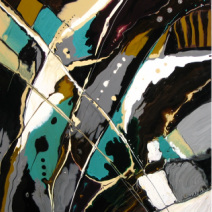 "Retro Schmetro" 2005 18 x 18" wall art, kiln fired pigments on float glass As artists, we often say to each other, "So, have you figured out what you want to be when you grow up?" That's code for, "What are you discovering and how is your work growing?" Makes an interesting question for all of us to ask and keep on asking. It's the kind of inquiry that helps us to continue to grow as humans and as proper creative beings. When I was growing up I knew I wanted to be an artist; but like the young boy who wanted a B-B gun in the movie "A Christmas Story", I was told I'd shoot my eye out. (Translation: You can't make a living making art!) My choices as a young woman in the 50's were limited to Teacher, Nurse, Secretary or Mother. I took what I thought was the easier "mother way." I finally went to university and art school, then two kids and a divorce later settled for life as a Graphic Artist. 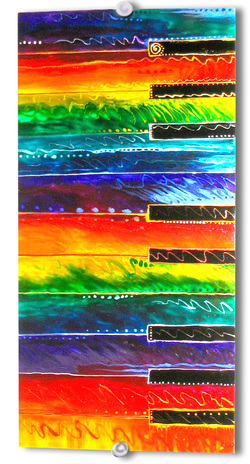 "Piano Forte" 18 x 24" 2004 kiln-fired pigments on float glass But I was always a bit contrary and a whole lot stubborn and what I was told I couldn't do was what I really NEEDED to do. I finally summoned up the courage to step away from the security of a regular paycheck and do what I'd always known I could do..... shoot your eye out or no! Nowadays I see some really talented kids that are given constant encouragement and always told they can do anything they want, and they end up with little or no drive. They seem to dabble in lots of things and accomplish nothing. So perhaps a little hardship and discouragement is good for the soul. Another way of putting it is "Finding your brand." An artist's brand is his or her artistic voice and includes subject matter, style, color palette and much more. I subscribe to a weekly Art News newsletter and skim through the many photos amazed by the diversity. Some of these just make me want to ask "why?" When I was in art school, it was all about angst. You had to create gut wrenching honesty or strong social commentary to qualify as a fine artist. But few people really want to live with gut wrenching angst though it might make great headlines and attract a big crowd at gallery openings. On the other hand, as a glass artist I can create (and have created) lovely sun catchers and Christmas ornaments and have lots of low ticket sales. But, as someone recently asked me, "Is this really what you want to be known for?" 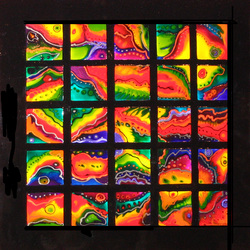 "Shirt Off My Back" 16 x 16" 2002 Kiln-fired pigment on sheet glass A brand is an evolving thing but I think it's important to know, if not what you want to be...at least it's in your general vocabulary. For me, it's about several things: Color, Joy and Nature. Stay with me as I continue to explore this pesky question of branding and knowing what to be as a grown-up. I'm including photos that show a progression of my work over many years. This post illustrates art from the early years of glass beginning with low-fire painted glass. Next time I'll include some early fused pieces. My first commission was when I was a sophomore in high school. I was paid $100 for painting six foot Disney cartoon silhouettes with reflective paint on the fence at the local drive-in theater! That was big money back in the 50's but it was also before computers and sophisticated enlarging tools, making it quite an endeavor for a sixteen year old. (It was also a time when little attention was paid to copyright laws and I had no idea that what I was asked to do wasn't exactly legal.)
Through the years I've had many more commissions and most have been, not only "good," but a real delight! There have only been two that I would classify as "the bad and the ugly." The thought of these still make me cringe, like the one that literally "went to the dogs" (which led to a ban on pet oriented art.) Then there was one where "teal" was definitely in the eye of the beholder. Enough said? This got me thinking about what makes a good commission? Here are a couple of suggestions when commissioning work: 1. Don't ask the artist to work outside their comfort zone... Make sure their color palette and style will fit into your home or business. 2. Give clear guidelines about what you do and don't want. 3. Allow the artist enough freedom of expression and don't over control. 4. Colors can be so tricky and fabric samples are helpful but beware of computer generated sketches if color is very particular, because monitors can vary greatly, as can printers. 5. Give the artist photos of where the art will go and what's in the surrounding area if that's important. On the artist side, all I can say is, "Don't be afraid to walk away." Discretion is the better part of valor. Don't let your need for money push you into a relationship that will make both of you miserable. If it sounds like I've been there, I have. The best commissions are accompanied by words like: "I love your work and I know I'll love anything you do!" If that doesn't happen, in the words of a country song: Know when to fold 'em! I soooo wish I'd taken this advice more often! But nothing makes me happier than a finished commission that is received with real joy. Here are photos of a few commissions that ended very well. 3/4/2012 1 Comment Omaha Glass Class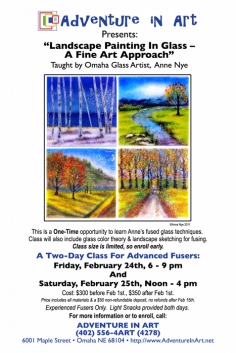 Had a great time teaching my first glass class this past weekend. Twelve students from three states: Nebraska, Iowa and two brave ladies all the way from Portland. I must say these two made me a little nervous, coming from Portland, the glass “mecca” for fusers. Which brings me to my only real fear in teaching a class…. that I wouldn’t be able to bring anything new to these folks who had put out good money and traveled here to take my class. Years ago when I was just beginning to learn about glass, I took my one and only class. The teacher spent most of the time talking about safety, much of which related more to blown glass than fused. He gave us some 4″ pre-cut squares and scrap we were to assemble using really poor quality tools, and that was it for $100! I was so outraged I asked the local community college for my money back and got it! After that I invested in a lot of good books and taught myself. Well, no one asked for their money back at my class and I learned a few things too, so guess it’s all good. First of all I learned that one of my missions in life is to make fused glass into an accepted fine art form. I also learned that the hardest part of teaching is expressing in an intelligible language so that others can understand things that are intuitive to me. Started out with a couple of photos. Next, we talked about editing sketches for glass and how to use compositional basics like the “golden section,” color balance and value to keep the view in the composition. Then we took the piece step by step, learning how to layer transparent glass colors to create new colors with the depth and richness of a good painting. Students create color samples, learning color mixing & blending with crushed glass “frit” and pose with smiles in a group photo. November 10, 2011 Beginning sketch for new wing of Mercy Hospital, Cedar Rapids. Working through Cornerhouse Gallery, Cedar Rapids, to create 3 painting based on 3 of my earlier pieces. Wall is 10 feet but not much room to step back and view so art must appear to fill the area without dominating the space. Glass will be added to paintings and will “flow” out from them, letting the eye read them as one continuous image. Completion date: February 2012 The walls of my studio are covered with tiny thumbnail sketches, much to the chagrin of those neat-niks that have sometimes shared studio space with me. Most of the time I barely notice them; but the other day while working on a video studio tour, I got to thinking about these thumbnails...where they come from and what they become. Way back in my art school days every project began with dozens of thumbnail sketches and I came to dread making them. I preferred to let the piece “evolve." Translation: I was too undisciplined (lazy) to do the planning. Well, there’s nothing like making a business out of your art to knock poor planning out of you. Now I do hundreds of tiny “thumbnails." Some end up becoming paintings or art glass for which I found the planning of sketches absolutely essential. This is especially true for my paintings because I add glass embellishments to them...thus the "fire" part of the title of this post! I think I, like many artists, was afraid to plan too much and get too "business like" about art because it would then cease to be fun and turn into work. I recently saw a video where renowned glass blower, Dale Chihuly, said something similar regarding how long he would continue doing what he does. “Till it ceases to be fun; then I’ll stop” was his comment. The element of fun is very important to us as artists because “fun” is closely tied to spontaneity and energy. Without those elements, the art dies, or at least struggles... but without the planning, the whole career is stunted. In elementary school I got in a lot of trouble because of my doodling and drawing. Teachers thought I wasn’t listening, but now I realize I find it very hard to listen without doing something with my hands. It’s probably a symptom of some kind of learning disorder but it’s led me to carry one of those little moleskin sketch books with me at all times to pull out during church sermons or talks I attend or while watching TV in the evenings. Without really worrying about the final product, I draw a little freehand rectangle and let my pencil fill it in with whatever images happen to be in my mind at the time. My best pieces have come out of this process even though that is seldom the “goal." Keeping the sketches as a fun little exercise on its own, keeps it fresh and fun.and sometimes they grow up and become actual paintings like these below. "Harbor City" 18 x 26""The Peacock Tree" 18 x 26""Dream Pilot" 18 x 26""Anniversary Dance" 12 x 22"Thanks for reading and Happy Sketching...... 3/4/2012 0 Comments Urban Abby Baptismal BowlHave a commission to create a Baptismal Bowl, approximately 22” diameter for Urban Abbey, an off-shoot of United Methodist Church in Omaha NE. The photo above is the fount in the parent church created in mosaic tile. The fused glass bowl is to “echo” it. The photos below show the mold and the unfired bowl, ready for the kiln. I have used a “mosaic” approach with crushed glass and small squared of glass, covering it with fine clear to give a smoother surface that’s easier to clean. Bowl will have a 2” collar all round and be approximately 2” deep. 5” was too deep......gravity not my friend here......bowl slumped unevenly. Will redo with following changes: 1. Add 1” to diameter 2. Change the yellow to amber 3. Make the lighter blue transparent instead of opal 4. Lose the rim and take the red all the way up 5. Slump only to 3.5” deep October 18, 2011 Four Seasons Donor Wall created for Samaritan Bethany Foundation, a Retirement Center in Rochester, Minnesota. Donor names will be placed on acrylic panels over the metal tree area. "Glass Goes Big" 3/4/2012 0 Comments 2011 Commission Commissioned Painting through Blue Pomegranate Gallery. Husband commissioned this piece as a gift for his wife upon completion of her Master’s Degree. Design is based upon lifestyle and interests of the couple. 30" x 40” 3/4/2012 0 Comments Diamond Head 201130” x16” fused glass in welded stand, commissioned limited edition series based on local art for Wyland Gallery, Haleiwa, Hawaii. |
all images ©Anne Nye 2015
Archives
November 2015
|
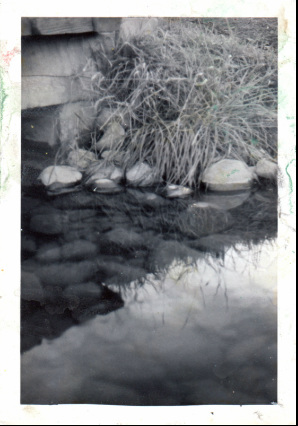
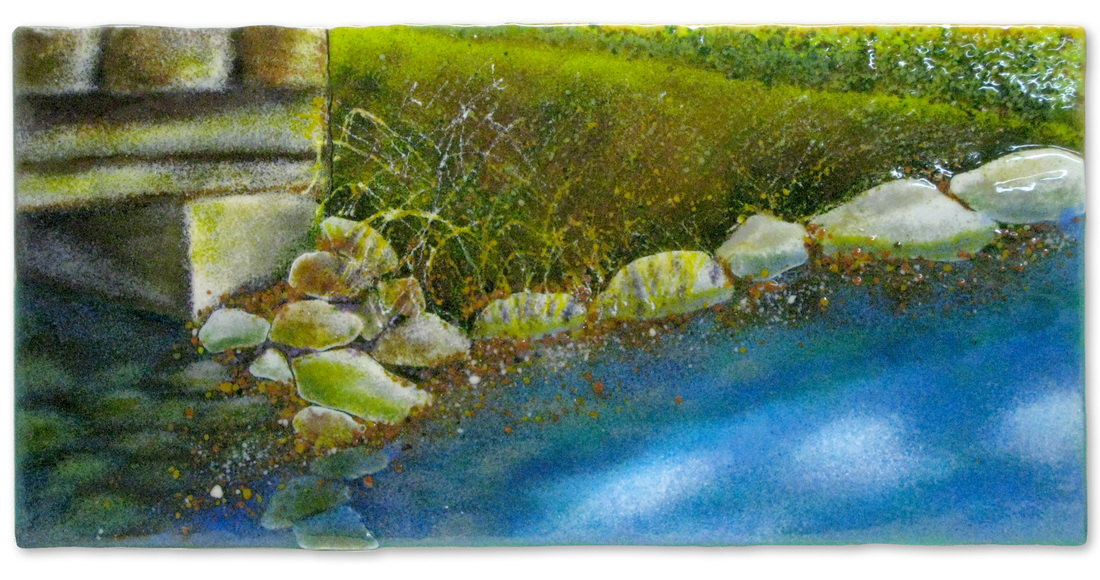
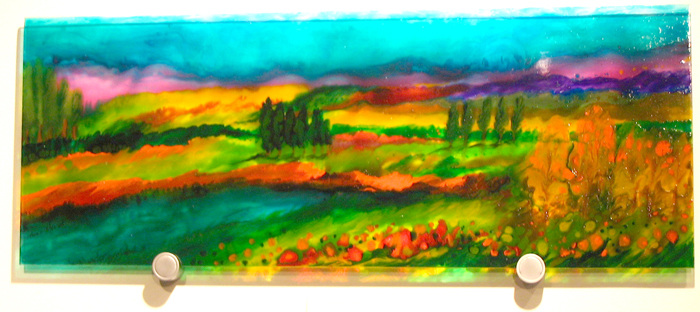
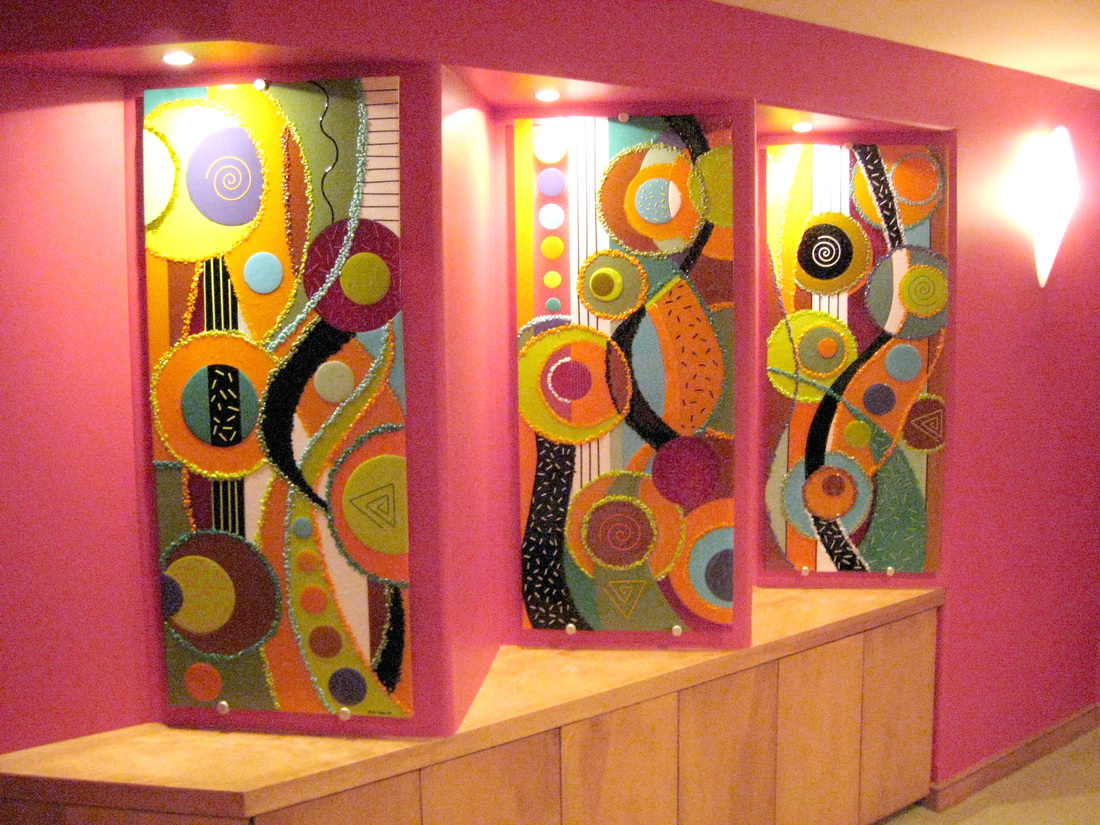
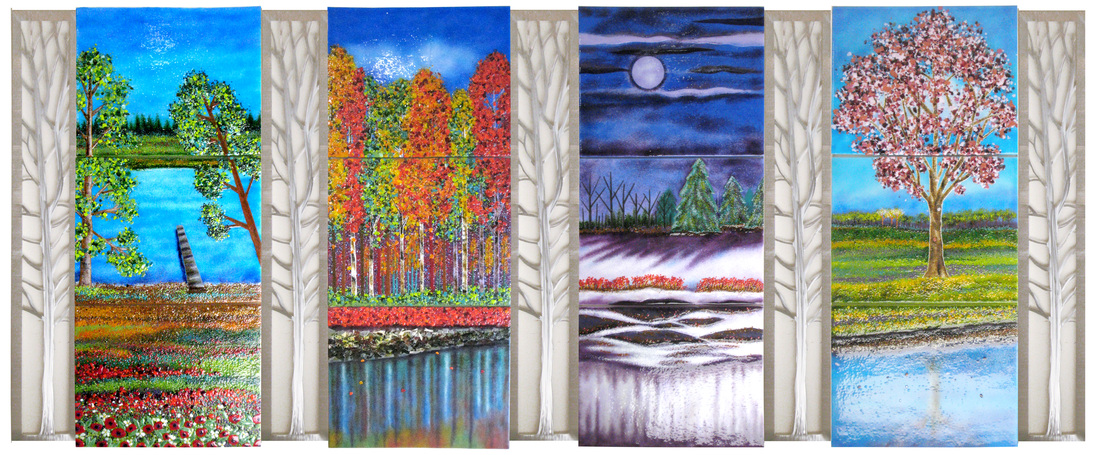
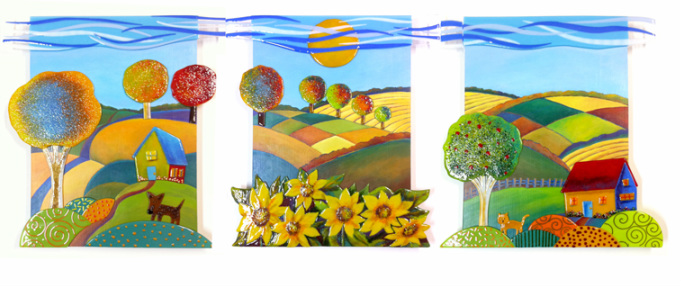
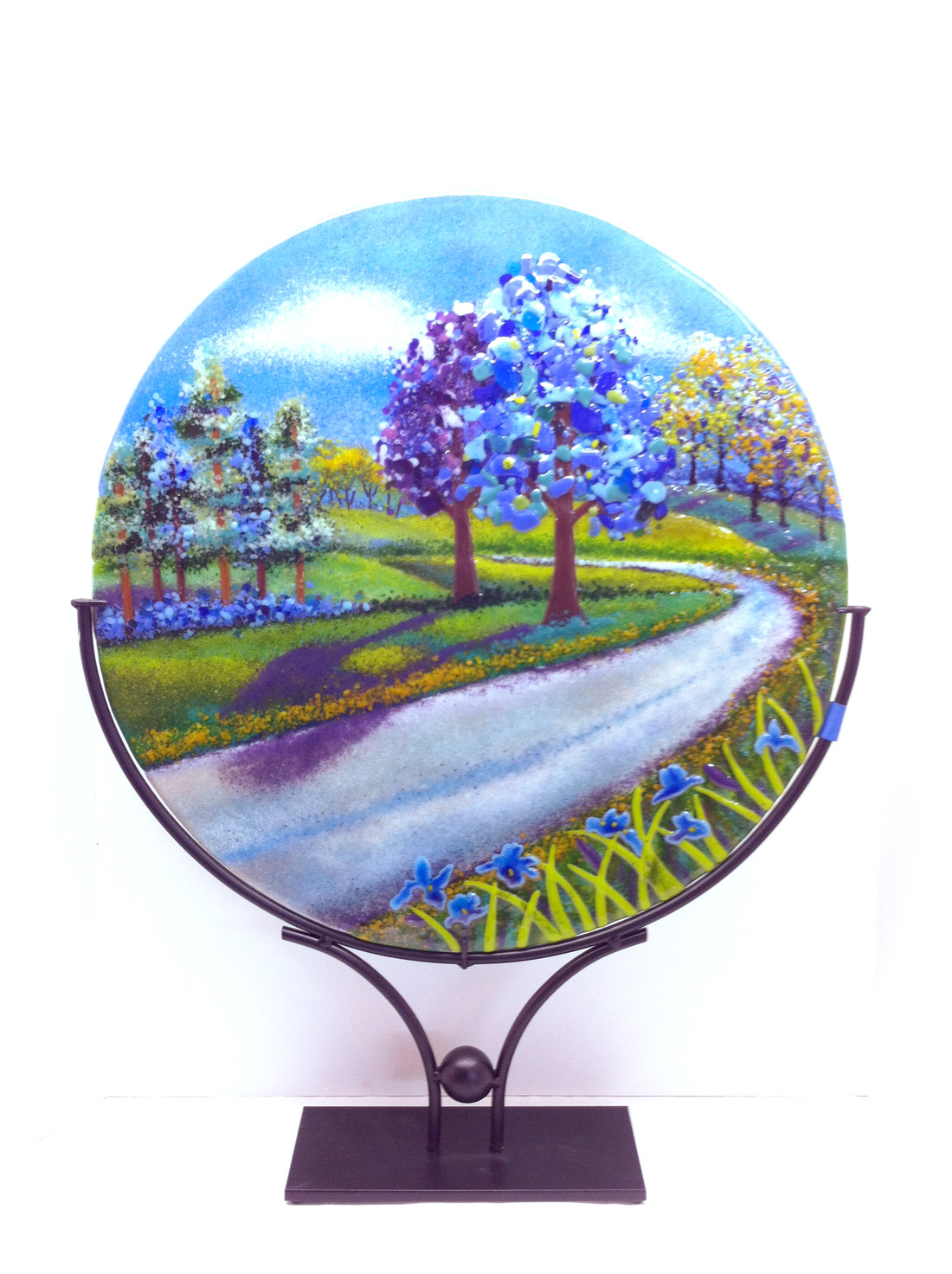


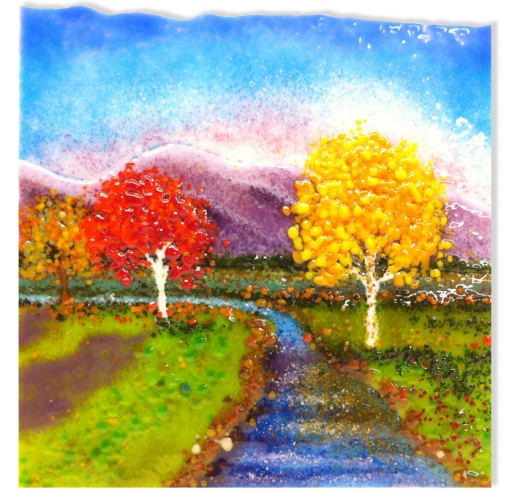
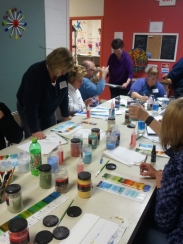
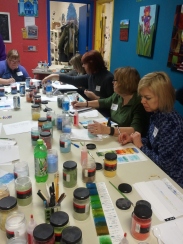
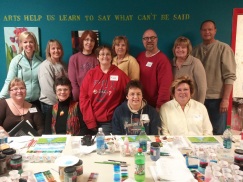
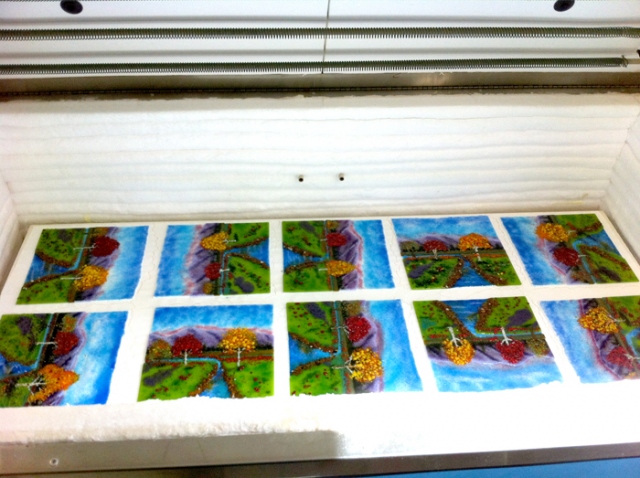
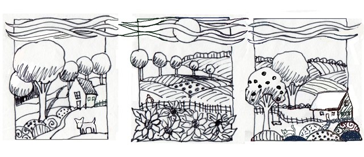
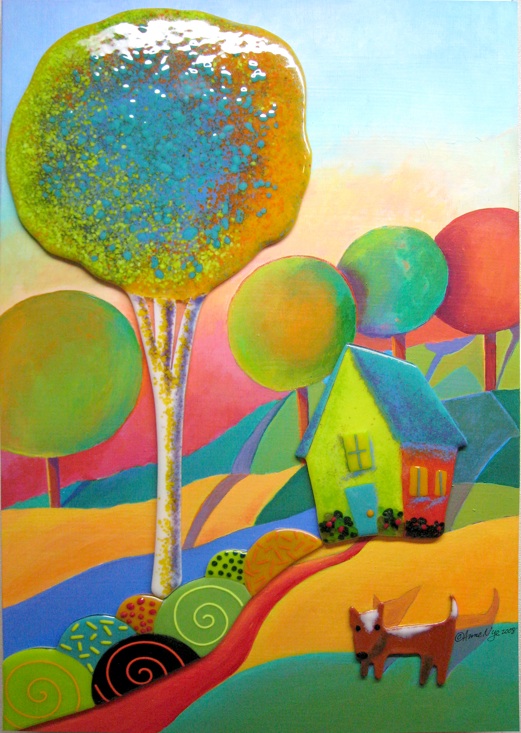
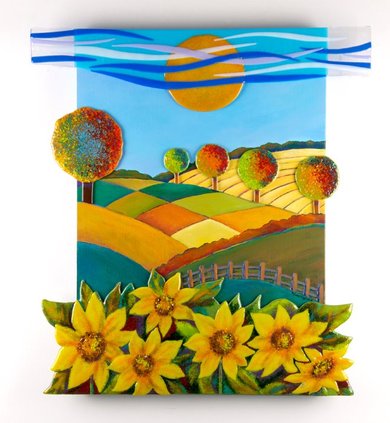
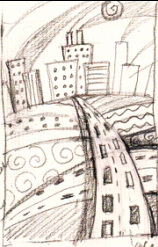
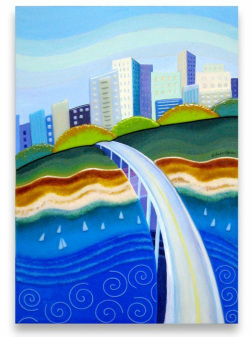
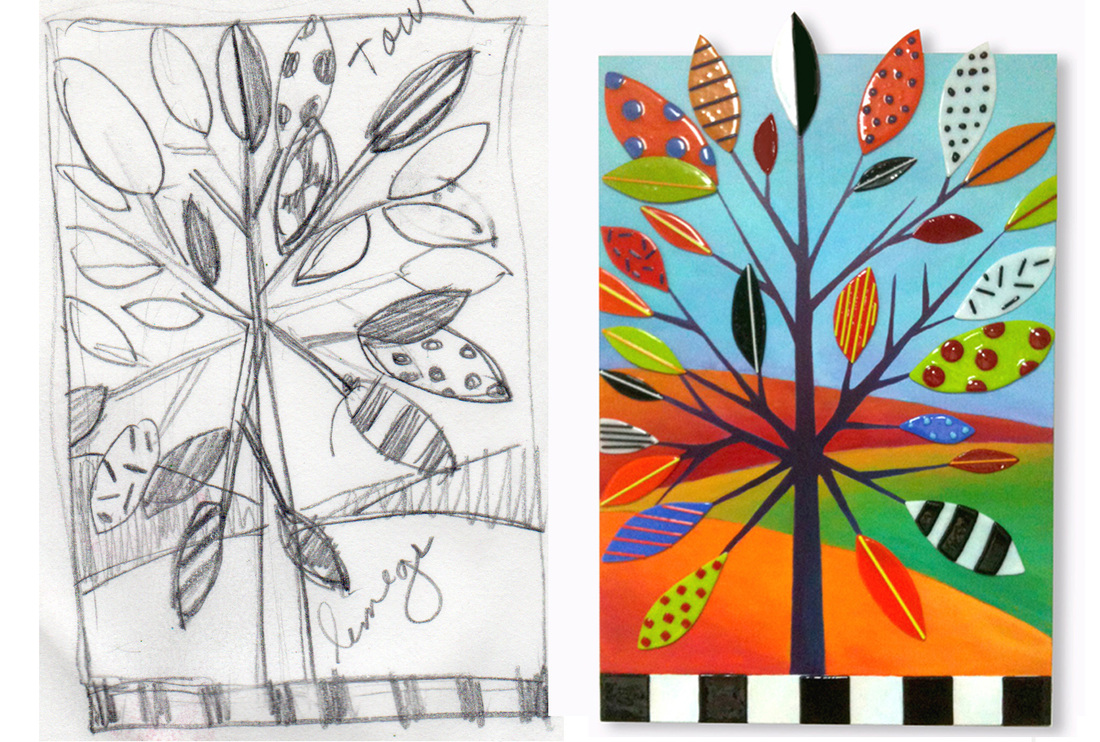
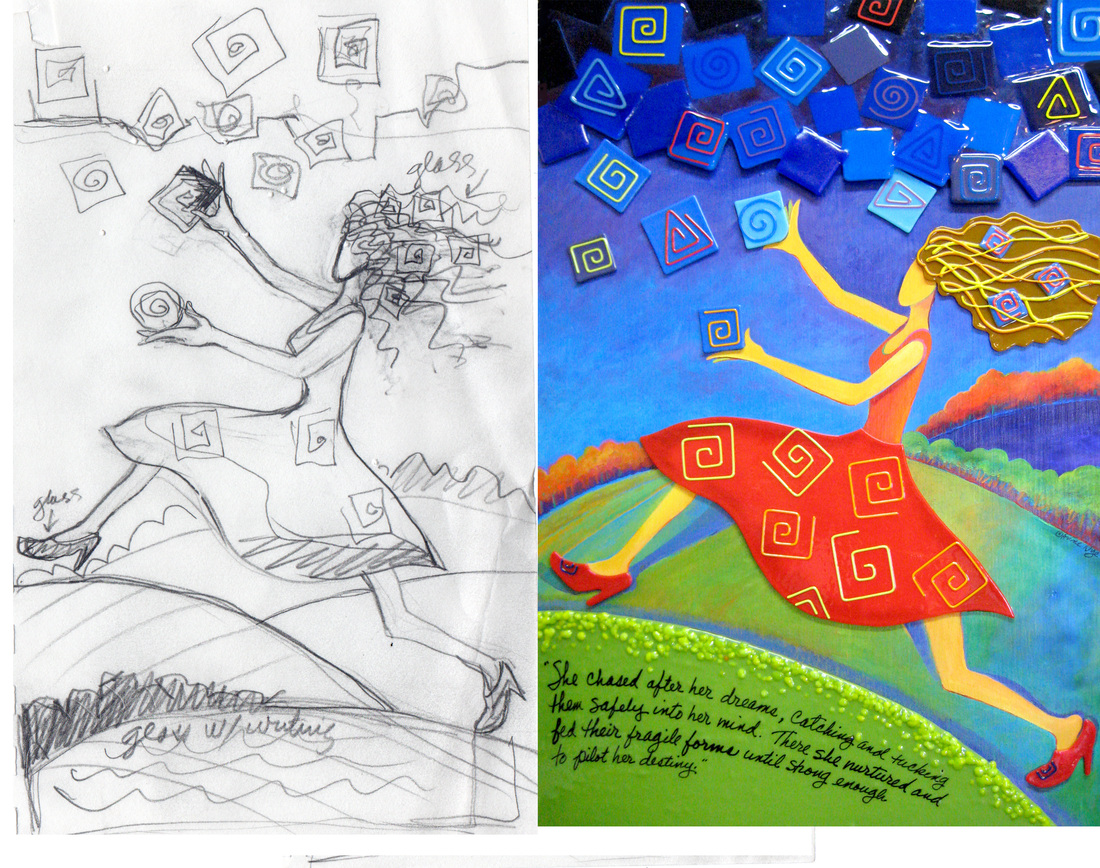
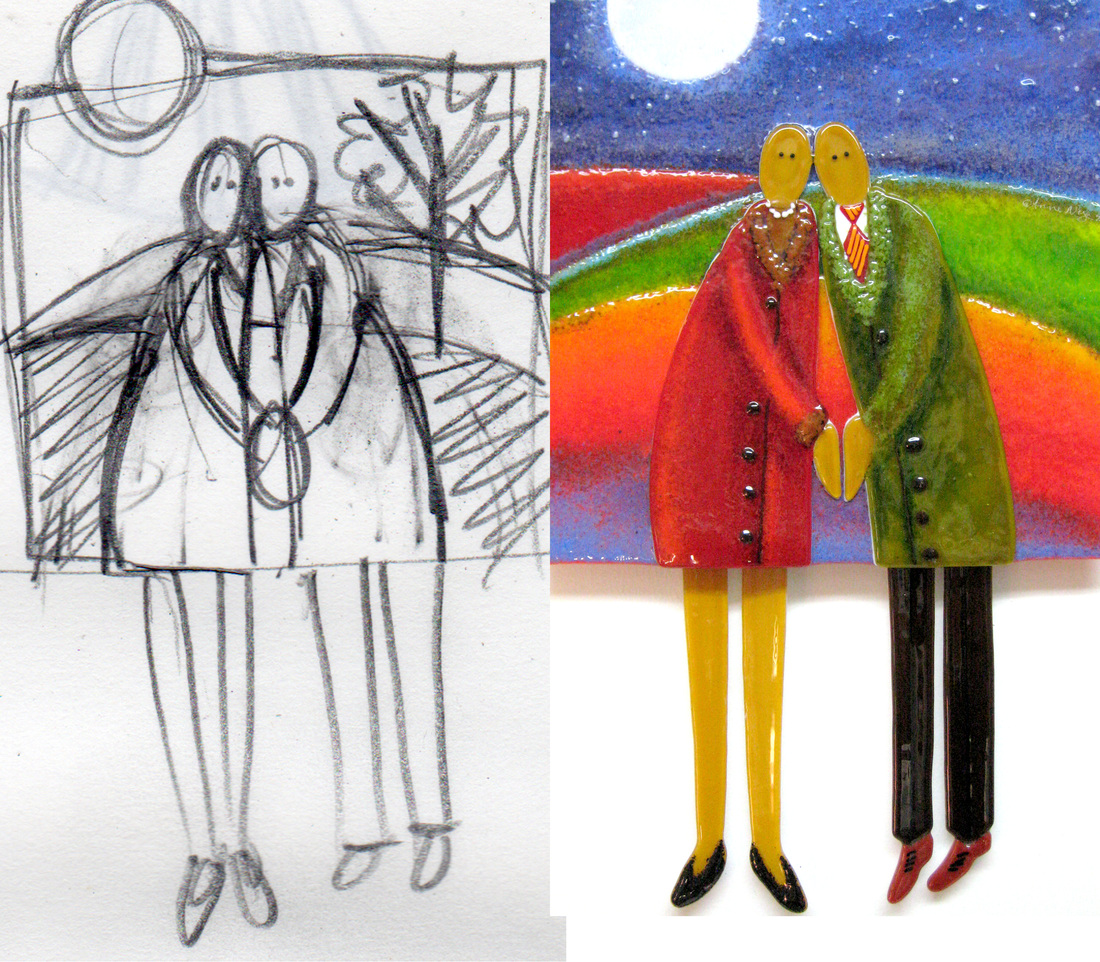

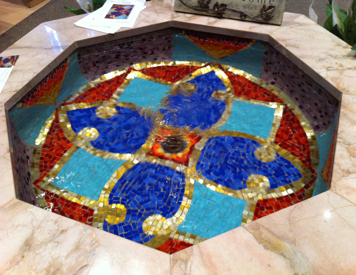
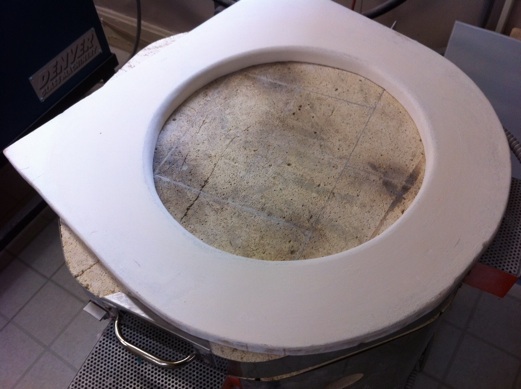
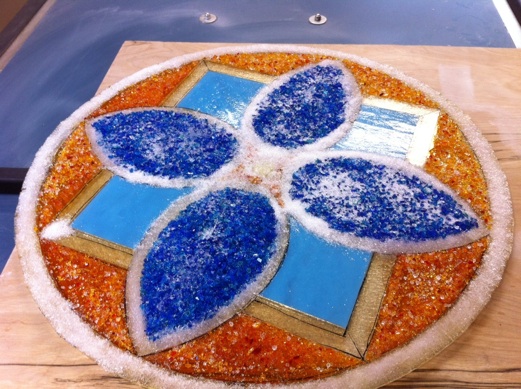
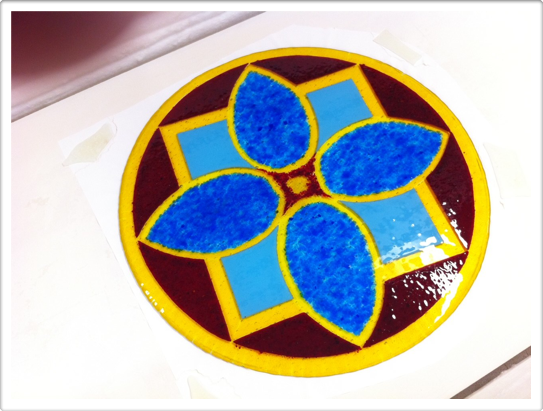
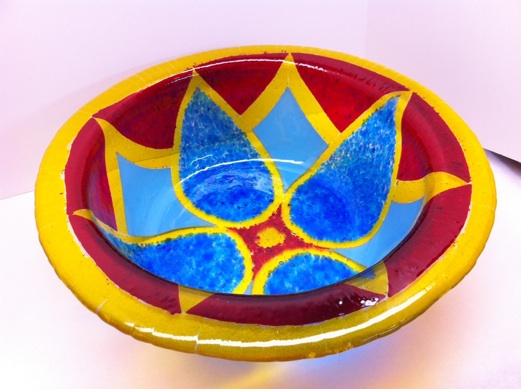
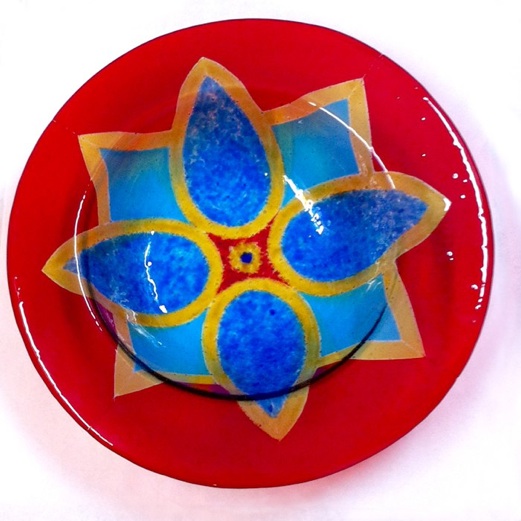
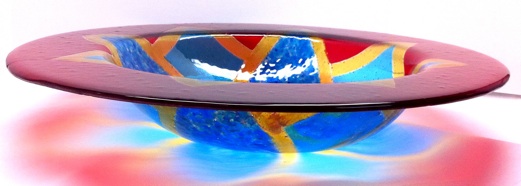
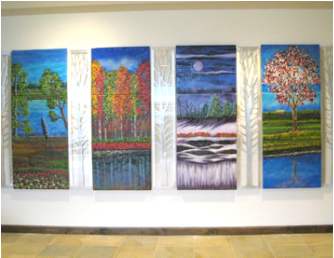
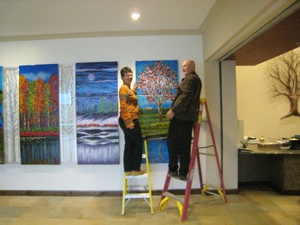
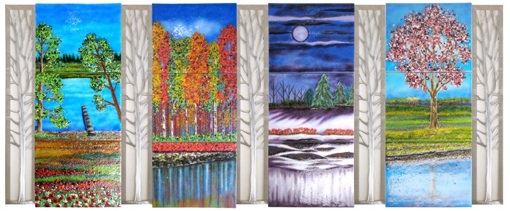
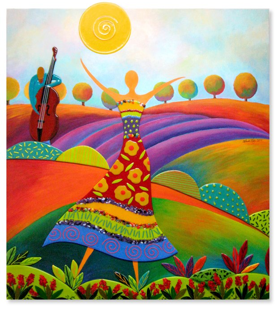
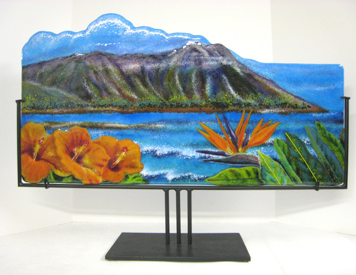
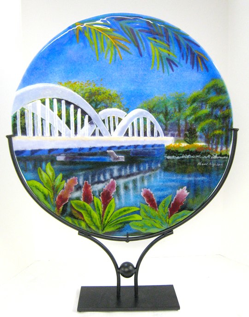
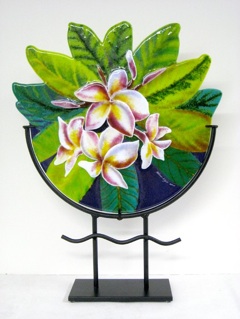
 RSS Feed
RSS Feed